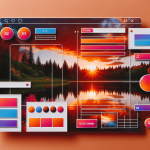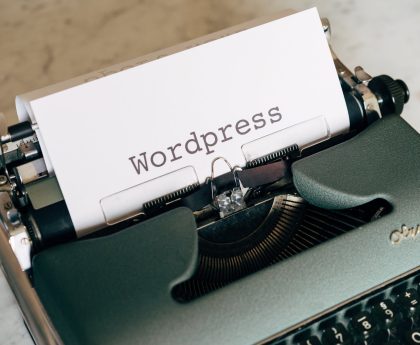![]()
Do you want to make sure your WordPress site is accessible to everyone?
Look no further! In this guide, you’ll learn easy ways to ensure your site is user-friendly for all visitors.
These tips will help make your website more inclusive and accessible to those with disabilities.
Let’s start creating a more inclusive online experience for all users.
Understanding WordPress Accessibility
Importance of Accessibility in Web Development
Prioritizing accessibility in web development is important. It ensures that websites can be used by everyone, including those with disabilities.
Accessible websites provide equal access to information and services. This improves the user experience for all.
Challenges to web accessibility include color contrast, font size, alt text for images, and keyboard navigation.
To address these challenges, developers can follow guidelines like the Web Content Accessibility Guidelines (WCAG). They can also use tools like plugins and themes that focus on accessibility.
Testing websites for accessibility issues and using tools like UserWay can help developers ensure their sites are accessible to all users. This can help avoid legal issues related to accessibility laws.
Common Accessibility Challenges in WordPress Websites
WordPress websites can have common accessibility issues related to content structure and headings.
Developers should use headings properly, ensuring they are in a clear hierarchy that represents the flow of content.
It’s important to address color contrast and readability, especially for users with visual impairments.
Tools can be used to check color contrast, choose suitable fonts, and provide alternative text for images.
Including a “Skip to Content” link on a WordPress site can greatly improve navigation for users with disabilities.
This feature allows users to skip repetitive navigation elements and go directly to the main content.
By following WCAG guidelines, using accessible themes and plugins, and testing for accessibility with tools like UserWay, developers can create inclusive and user-friendly WordPress sites that comply with regulations and prevent potential legal issues regarding accessibility for people with disabilities.
WordPress Accessibility Features
WordPress has features that make it easier for people with disabilities to use websites. These features help improve the overall user experience. By following guidelines and using tools for accessible design, a WordPress site can ensure equal access to content for everyone.
Common challenges like color contrast, fonts, images, and navigation can be addressed with accessibility plugins. For example, UserWay offers features such as adjusting color contrast, generating alt text for images, and enhancing keyboard navigation. These plugins also check for WCAG compliance, which sets standards for web accessibility.
By using these tools during WordPress site development, accessibility issues can be reduced. This helps minimize the risk of legal action and ensures that the site can be used by all, regardless of disabilities.
WordPress Accessibility Best Practices
Content Structure and Headings
Proper content structure and headings are crucial for enhancing the accessibility of a WordPress website. Organizing content logically and using headings appropriately helps users with disabilities navigate the site and access information effectively.
Here are some best practices to follow:
- Use headings to create a clear hierarchy of information.
- Ensure headings accurately describe the content that follows.
- Use headings to break up text into manageable sections.
Additionally, it is important to:
- Ensure proper contrast in fonts and colors.
- Include descriptive alt text for images.
- Focus on keyboard navigation for a fully accessible experience.
Tools and plugins like UserWay and WCAG guidelines can assist developers in:
- Testing color contrast.
- Checking for accessibility issues.
- Improving the overall user experience.
In a world where lawsuits related to website accessibility are increasing, implementing these features and following accessibility guidelines is essential in software engineering and web development. This ensures that all users can seamlessly access content.
Alternative Text for Images
Alt text for images is important for web accessibility. It helps users with visual impairments understand website content.
Here are some best practices for creating alt text:
- Describe images accurately.
- Use keywords relevant to the image.
- Keep the text concise.
In WordPress websites, adding alt text is necessary to meet accessibility standards like WCAG. This improves user experience and inclusivity.
As web accessibility becomes more regulated, having proper alt text is now a standard practice in web development.
Tools like UserWay and accessibility checkers can assist in testing alt text and other elements for compliance and a better user experience.
Keyboard Navigation
Keyboard navigation is important for web accessibility, especially for users with disabilities.
For WordPress websites, implementing keyboard navigation ensures that all users can easily access and navigate the site.
By focusing on accessible design elements such as clear fonts, color contrast, and alt text for images, developers can create a more inclusive online experience.
Using plugins like UserWay to check color contrast and provide keyboard-friendly features can enhance accessibility.
Following WCAG guidelines and testing the site with tools like aTag can help identify and address navigation issues.
Incorporating keyboard navigation into WordPress themes and ensuring all elements on a page can be reached and interacted with using only a keyboard benefits all users.
It’s important for software engineering in website development to prioritize accessibility to avoid potential lawsuits and comply with laws regarding web accessibility.
Providing keyboard navigation as a free service on WordPress sites can improve the user experience for all individuals.
Color Contrast and Readability
Color contrast is important for web content readability. Low contrast makes it hard for users, especially those with visual impairments, to read a website.
Following guidelines like the Web Content Accessibility Guidelines ensures that color contrast meets accessibility standards. WordPress users can use plugins such as UserWay to check color contrast, add alt text to images, and improve keyboard navigation.
Adjusting color contrast based on these guidelines creates a more inclusive experience for all users, especially those with disabilities. It also reduces the risk of lawsuits related to accessibility laws.
Including web accessibility features in the development of WordPress themes can greatly improve the overall user experience.
Skip to Content Link
A “Skip to Content Link” helps users go straight to the main content of a page by skipping repetitive navigation menus. This feature makes websites more accessible, especially for people with disabilities.
It caters to users of screen readers or keyboard navigation, aligning with accessibility guidelines like WCAG. These guidelines ensure websites are user-friendly for everyone.
Other elements like color contrast, font sizes, alt text for images, and keyboard navigation also play a role in making websites inclusive.
Plugins like Userway provide free tools to check these features on WordPress websites.
As lawsuits and laws regarding web accessibility increase, integrating these tools into web development is crucial for creating a seamless user experience.
Testing for Accessibility Compliance
Website developers can use tools like UserWay to test accessibility compliance in WordPress websites. These tools check for issues such as color contrast, fonts, alt text for images, and keyboard navigation. Focusing on color, fonts, and links helps create an accessible user experience. Following WCAG guidelines and testing accessibility features like focus on page elements is important. Challenges include ensuring themes and content design are accessible to all users.
With increasing lawsuits related to web accessibility, developers need to prioritize testing to ensure all people, including those with disabilities, can access websites easily.
WordPress Accessibility Plugins
Overview of WordPress Accessibility Plugins
Accessibility plugins are important for WordPress websites. They help all users access and navigate the site easily. These tools improve accessibility features and make the site more user-friendly for people with disabilities.
They adjust color contrast, fonts, and images to create a better web experience. For example, they can add alt text to images for visually impaired users.
Focus and keyboard navigation tools also assist with easy site navigation.
Popular plugins like UserWay and WP Accessibility offer features such as color contrast checks and text resizing to meet web accessibility guidelines.
Using these plugins can help businesses avoid legal issues related to accessibility laws.
Popular WordPress Accessibility Plugins
Popular WordPress accessibility plugins make websites more accessible for all users, including those with disabilities. These tools help meet web accessibility guidelines like WCAG by checking color contrast, fonts, images, and alt text. They focus on navigation, keyboard accessibility, and creating a user-friendly experience.
These plugins offer both free versions with basic features and paid services with advanced tools. Installing and configuring them on a WordPress site is usually simple, requiring a download from the WordPress repository and activation in the admin panel.
Using these plugins can help website owners avoid legal issues related to accessibility laws and enhance the overall accessibility of their site.
Installing and Configuring Accessibility Plugins
To install accessibility plugins on a WordPress website, users can follow these simple steps:
- Search for free accessibility plugins on the WordPress plugin directory.
- Install the chosen plugin on their website.
- Configure key settings like adjusting color contrast, font sizes, and enabling features such as text-to-speech.
It’s important to ensure these plugins work effectively. Users should:
- Test their website using web accessibility tools like WCAG guidelines or the UserWay accessibility plugin.
- Check for alt text on images, keyboard navigation, and focus elements.
By addressing accessibility issues in website design, users can reduce the risk of lawsuits due to non-compliance with accessibility laws. Prioritizing accessibility not only enhances user experience but also promotes inclusivity for all visitors.
WordPress Website Development for Accessibility
Building an Accessible WordPress Theme
Developers can make a WordPress theme more accessible to users with disabilities by:
- Using accessible design elements
- Following web accessibility guidelines like WCAG
- Testing the theme with tools such as UserWay
- Providing alternatives for non-text content like images through alt text
To improve keyboard navigation and screen reader compatibility in a WordPress theme, developers can focus on:
- Proper heading structure
- Skip links
- ARIA landmarks
- Ensuring all interactive elements are easily navigable using a keyboard
Color contrast and text readability are important in creating an accessible WordPress theme:
- People with visual impairments may struggle to read content with insufficient contrast or small fonts
- Ensuring proper color contrast ratios
- Using accessible fonts
- Providing options for adjusting text size can enhance the user experience for individuals with disabilities.
Optimizing WordPress Plugins for Accessibility
When optimizing WordPress plugins for accessibility, software engineering is important.
It ensures that the site is accessible to everyone, including those with disabilities.
Developers should focus on design elements like color contrast, fonts, images, and navigation.
This makes the website user-friendly.
Using tools like WCAG guidelines and ATAG can help create accessible plugins.
Features like alt text for images, keyboard navigation, and focus on interactive elements are crucial.
Testing the plugin’s accessibility is essential to identify and fix any issues.
Tools like UserWay or free online services can check for color contrast and accessibility guidelines compliance.
By following these steps, developers can create WordPress plugins that comply with laws and regulations for web accessibility.
This provides an inclusive web experience for all users.
Providing Accessible Support and Documentation
Web developers can make sure their support and documentation are accessible to everyone, including those with disabilities. They can do this by following best practices in web accessibility.
This includes creating websites with features like:
- Text alternatives for images
- Proper color contrast
- Keyboard navigation options
Developers can test and optimize their site’s accessibility by using tools that meet Web Content Accessibility Guidelines , like plugins or themes.
Improving the user experience for people with disabilities can also be done by:
- Providing clear and user-friendly navigation paths
- Using readable fonts
- Including descriptive link text
Companies such as UserWay offer free accessibility tools that check for issues like color contrast and alt text guidelines. Prioritizing accessibility in support materials and documentation can help websites avoid lawsuits and comply with laws like the Americans with Disabilities Act (ADA).
By including these elements in the design and development process, software engineering teams can create a more inclusive online experience for everyone.
Using Tools for One Click Accessibility
Tools for one-click accessibility in WordPress can make websites more accessible. These tools automate tasks like adjusting color contrast, fonts, and images to help people with disabilities navigate the web easily.
Some popular tools for one-click accessibility in WordPress include:
- Plugins that check color contrast
- Plugins that provide alt text for images
- Plugins that focus on keyboard navigation
Users can add these features to their websites by installing and activating the plugins. They can then test their pages against WCAG guidelines for accessibility.
These tools not only address accessibility issues but also help in avoiding lawsuits related to web accessibility laws. By using such tools, software engineers and web developers can create an inclusive online environment for all users.
Popular Accessibility Tools for WordPress
Overview of Accessibe Plugin
The Accessibe Plugin for WordPress makes websites more accessible for users. Here’s how:
- Users can adjust text sizes, color contrast, fonts, and images to follow WCAG guidelines.
- Alt-text for images, focus on elements, and keyboard navigation improve the experience, especially for people with disabilities.
- Site owners can use these tools to prevent legal issues and comply with accessibility laws.
- Users can customize the plugin by testing color contrast, changing fonts, and improving navigation.
- This free plugin is helpful for software engineering and website development, creating an inclusive online space.
UserWay Accessibility Widget
UserWay Accessibility Widget is a plugin for WordPress. It enhances website accessibility by providing tools like color contrast adjustments, font adjustments, alt text for images, and keyboard navigation.
The plugin ensures that people with disabilities can easily navigate and interact with the site. It follows web accessibility guidelines such as WCAG to meet necessary standards.
Integrating UserWay into a WordPress theme is free and easy for developers. They can customize the plugin to fit their needs.
The widget features focus elements and follows ATAG guidelines. This makes the site more accessible to all users, reducing the risk of lawsuits related to web accessibility laws.
Wa11y Accessibility Tool
The Wa11y Accessibility Tool offers features to make WordPress websites more accessible.
It checks color contrast, ensures readable fonts, adds alt text to images, and improves keyboard navigation.
By following WCAG guidelines, this tool helps users create accessible web pages.
Compared to other plugins, Wa11y focuses on user experience and ease of use.
It helps identify and fix accessibility issues on websites, making it a reliable choice for site owners.
With increasing focus on web accessibility, tools like Wa11y are vital.
They ensure websites are accessible to all people, including those with disabilities.
With its easy interface and practical features, Wa11y is a valuable asset for web development.
Related Articles
Improving Accessibility in Block Countries
Improving web accessibility in block countries is important for ensuring equal access for all users.
Site developers should implement features like proper color contrast, readable fonts, and alt text for images to enhance accessibility.
Tools such as WordPress accessibility plugins and WCAG guidelines can help create more user-friendly websites.
Testing for keyboard navigation and focus elements is necessary to provide a seamless experience for people with disabilities.
Integrating these web accessibility practices into web development can help block countries avoid lawsuits and comply with accessibility laws.
Using free plugins like UserWay can enhance website accessibility by offering features like text to speech and customizable design themes.
Prioritizing accessibility in software engineering and design can significantly enhance the web experience for all users in block countries.
Final thoughts
Making your WordPress site accessible is easy with this simple guide.
Accessibility is crucial for users with disabilities.
Follow these tips to ensure that all visitors can easily navigate and use your website:
- Use clear headings.
- Add alt text for images.
- Choose an accessible theme.
- Test your site’s accessibility.
These steps will help you create a more inclusive online experience for all users.
FAQ
What is web accessibility?
Web accessibility refers to designing websites and digital content in a way that can be easily accessed and used by people with disabilities. This includes features like alt text for images, keyboard navigation options, and screen reader compatibility.
Why is it important to make my WordPress site accessible?
Making your WordPress site accessible is important to ensure that all users, including those with disabilities, can easily navigate and use your site. This helps you reach a wider audience and can improve your SEO ranking.
What are some common accessibility barriers on websites?
Some common accessibility barriers on websites include lack of alternative text for images, poor color contrast, non-descriptive link text, and inaccessible forms. For example, using descriptive alt text like “blue sweater” instead of “image123” helps visually impaired users.
How can I improve the accessibility of my WordPress site?
To improve accessibility on your WordPress site, use headings for content structure, add alternative text to images, ensure color contrast for readability, and use keyboard navigation. Install accessibility plugins like WP Accessibility for additional assistance.
Are there tools available to check the accessibility of my site?
Yes, there are tools available to check the accessibility of your site. Examples include WAVE, axe, and WebAIM. These tools can help identify accessibility issues and provide suggestions for improvements.




